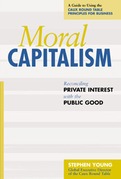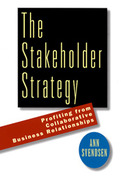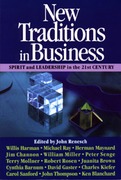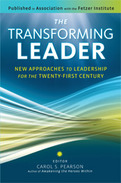- This product page is for the original 2003 hardcover bestseller. Please also see The New Confessions of an Economic Hit Man , published in January 2015
- Find out more about this important book and the worldwide movement it has spawned at www.economichitman.com
- A New York Times bestseller!
- Read what people are saying about this book and join the conversation--visit our Confessions blog today
- Read a transcript of John Perkins' recent interview with Amy Goodman on Democracy Now!
- Read David Korten's review on www.dragonflymedia.com
- An extraordinary, real-life tale of international intrigue and corruption
- Reveals the hidden mechanics of imperial control behind such major international events as the fall of the Shah, the death of Panamanian president Omar Torrijos, and the invasions of Panama and Iraq, as well as providing an inside view of the corrupt U.S.-Saudi Arabian relationship
- One man's personal journey from eager servant of empire to impassioned advocate for the rights of oppressed people
In his controversial book, John Perkins tells the gripping tale of the years he spent working for an international consulting firm where his job was to convince underdeveloped countries to accept enormous loans, much bigger than they really needed, for infrastructure development--and to make sure that the development projects were contracted to U. S. multinationals. Once these countries were saddled with huge debts, the American government and the international aid agencies allied with it were able, by dictating repayment terms, to essentially control their economies. It was not unlike the way a loan shark operates--and Perkins and his colleagues didn't shun this kind of unsavory association. They referred to themselves as "economic hit men."
This is a story of international political intrigue at the highest levels. For over a decade Perkins traveled all over the world--Indonesia, Panama, Ecuador, Columbia, Saudi Arabia, Iran--and worked with men like Panamanian president Omar Torrijos, who became a personal friend. He helped implement a secret scheme that funneled billions of Saudi petrodollars back into the U. S. economy, and that further cemented the intimate relationship between the Islamic fundamentalist House of Saud and a succession of American administrations. Perkins' story illuminates just how far economic hit men were willing to go, and unveils the real causes of some of the most dramatic developments in recent history, such as the fall of the Shah of Iran and the invasions of Panama and Iraq. Confessions of an Economic Hit Man, which many people urged Perkins not to write, is a blistering attack on a little-known phenomenon that has had dire consequences for both the lesser-developed countries and for American democracy.
- This product page is for the original 2003 hardcover bestseller. Please also see The New Confessions of an Economic Hit Man , published in January 2015
- Find out more about this important book and the worldwide movement it has spawned at www.economichitman.com
- A New York Times bestseller!
- Read what people are saying about this book and join the conversation--visit our Confessions blog today
- Read a transcript of John Perkins' recent interview with Amy Goodman on Democracy Now!
- Read David Korten's review on www.dragonflymedia.com
- An extraordinary, real-life tale of international intrigue and corruption
- Reveals the hidden mechanics of imperial control behind such major international events as the fall of the Shah, the death of Panamanian president Omar Torrijos, and the invasions of Panama and Iraq, as well as providing an inside view of the corrupt U.S.-Saudi Arabian relationship
- One man's personal journey from eager servant of empire to impassioned advocate for the rights of oppressed people
2003
- Shows how to ensure that capitalism promotes progress and equality rather than enriching the few at the expense of many
- Based on principles developed by the Caux Round Table, an international network of senior business executives from such companies as 3M, Canon, NEC, Bankers Trust, Shell, Prudential, and dozens of other companies
- Provides practical guidelines for corporate social responsibility through the Caux Round Table's Seven General Principles for Business
The world is drifting without a clear plan for its economic development. Communism is dead, but in the wake of Enron and similar scandals, many see capitalism as amoral and too easily abused. A blueprint for progress is needed and Moral Capitalism provides one.
Moral Capitalism is based on principles developed by the Caux Round Table, an extraordinary international network of top business executives who believe that business can-and must-weigh both profit and principle. Caux Round Table's global chair, Stephen Young, argues that the ethical standards inherent in capitalism have been compromised by cultural values inimical to capitalism's essentially egalitarian, rational spirit, and distorted by the short-sighted dog-eat-dog doctrines of social Darwinism into what he calls brute capitalism. He demonstrates how the Caux Round Table's Seven General Principles for Business can serve as a blueprint for a new moral capitalism, and explores in detail how, if guided by these principles, capitalism is really the only system with the potential to reduce global poverty and tyranny and address the needs and aspirations of individuals, societies, and nations.
- Shows how to ensure that capitalism promotes progress and equality rather than enriching the few at the expense of many
- Based on principles developed by the Caux Round Table, an international network of senior business executives from such companies as 3M, Canon, NEC, Bankers Trust, Shell, Prudential, and dozens of other companies
- Provides practical guidelines for corporate social responsibility through the Caux Round Table's Seven General Principles for Business
In The Stakeholder Strategy, sociologist Ann Svendsen presents an effective and practical step-by-step guide that companies can use to forge a network of powerful and profitable collaborative stakeholder relationships.
While some forward-thinking corporations have tried limited collaborative approaches-focusing on one stakeholder group at a time-few have taken a comprehensive and strategic approach to building relationships with all of their stakeholders, notes Svendsen. And, while considerable commitment to the idea of stakeholder collaboration exists, there is a lack of knowledge and understanding about how to develop these relationships. The Stakeholder Strategy is the first book to show business leaders and managers how to establish and maintain positive, mutually beneficial stakeholder relationships. Based on a synthesis of ideas from community relations, corporate philanthropy, stakeholder management, organizational change, sustainability, and the corporate social responsibility literature, it offers an integrated framework, as well as the practical tools for developing new kinds of collaborative relationships.
Svendsen uses easy-to-grasp concepts from everyday life, such as the process we go through in finding a mate or developing a long-term friendship, to illustrate these relationship-building strategies. She lays out the steps a company should take to create a collaboration-friendly organization: establishing a social mission, values, and ethical guidelines; assessing corporate readiness for collaboration; and making changes in communication, information and reward systems to support internal and external collaboration. Featuring case study examples from companies in North America and Europe who are working to build collaborative relationships with their stakeholders, The Stakeholder Strategy is the first book to provide a detailed explanation of how to conduct stakeholder audits and social audits so that companines can evaluate their relationship-building success and keep on track.
- Provides an integrated framework for understanding a corporations responsibilities to a broad array of stakeholders-from customers to suppliers, employees, and communities.
- Offers a step-by-step guide as well as practical strategies that companies can use to forge a network of powerful and profitable collaborative
- stakeholder relationships.
- Features case study examples of companies across North America and Europe that are building collaborative relationships with their stakeholders.
2008
Kellie McElhaney, one of the world's leading experts on CSR strategy, offers a detailed process for seamlessly integrating your CSR efforts into your overall business objectives. “My goal,” she writes, “is not to tell you how to force your CSR strategy to be more authentic. My goal is actually to help you develop a CSR strategy that is authentic because of its natural linkage to your company's mission, vision, and values.”
Just Good Business lays out a framework of seven principles that help you develop CSR initiatives that make good business sense and tell the world about them in ways that are compelling and memorable. McElhaney offers a wealth of practical advice on implementation, including how to measure the results of your CSR.
McElhaney draws on over ten years of previously unpublished CSR consulting engagements inside companies grappling with developing strategically aligned CSR initiatives. The book's case vignettes, examples, best practices, and strategic recommendations span a host of industries and sectors and draw upon her work with leading corporations, such as McDonald's, Nokia, Levi Strauss, Digicel, Birkenstock, Gap Inc., HP, and Pepperidge Farm.
Savvy companies carefully manage their brand in every area. CSR shouldn't be any different. Just Good Business offers a detailed blueprint that any company can use to ensure that its CSR strategy delivers significant, quantifiable, bottom-line benefits.
A fundamental transformation-what many are calling a "paradigm shift"-is underway today in our business and work world. This transformation goes beyond the traditional quest for productivity and profit to embrace such issues as achieving more congruence between our spiritual values and our work, creating a more caring and loving workplace, empowering people to unleash their full creativity and vision at work, and recognizing the global and social responsibilities of business.
This book brings together fifteen of the foremost visionary thinkers about these new business traditions. These visionaries include leading futurists, such as Willis Harman; authors of important new books, such as Peter Senge, author of The Fifth Discipline: The Art and Practice of the Learning Organization; leaders of influential organizations in promoting new paradigm thinking, such as Charles Kiefer, chairman of Innovation Associates; and creators of innovative business and academic programs, such as Michael Ray, developer of the path-breaking Stanford University course on "New Paradigm Business." New Traditions in Business is the first collection in one book of their seminal writings.
Part I describes the historical roots and current signs of the transformation o how the new paradigm differs from traditional business practice o the shifts in human consciousness that form the context for the transformation o the role of spiritual values, vision, and community in the new business culture.
Part II details specific strategies for business transformation: new leadership roles to build learning organizations o the qualities of truly healthy companies o fostering community in corporations o steps for putting global thinking into practice in business o developing and communicating visionary leadership o creating empowered workplaces oenabling people to tap their full creative powers o keys to practicing ethical behavior in business.
Outlines a new leadership approach tailored to the realities of the 21st Century.
- Outlines a new leadership approach tailored to the realities of the twenty-first century
- Features chapters by such leading authors as Matthew Fox, Diana Whitney, and Alan Briskin
- Edited and annotated by the author of the bestselling The Hero Within
The traditional model of the heroic leader single-handedly piloting the organization was always something of a myth, but it is especially unrealistic now. We live in a complex, fast-evolving, highly connected world. There is simply too much for a single person to keep track of or to address successfully. Leaders today must not only optimize all their own faculties-mind, body, and spirit-they must harvest the full capacities of those around them.
To discover what leadership models are working now, the prestigious Fetzer Institute, along with the University of Maryland's School of Public Policy, and the International Leadership Association, brought together an impressive, interdisciplinary group of scholars and practitioners. The group drew on psychology, sociology, neuroscience, organizational change theory, myths and wisdom traditions, social networking theory, and the actual experiences of successful leaders to discover how leaders today achieve transformational results.
The first part of the book offers an overview of what transformational leadership is, how it works, and how it is evolving. The second part shows readers how to increase cognitive complexity, link up their conscious and unconscious minds, and lead in ways that connect mind, heart, and spirit. The third part describes ways of leading groups to harvest collective wisdom and promote coordinated performance in the service of transformational ends. The conclusion explores how transformational communication can anchor new learnings so that they become habitual.
Overall, The Transforming Leader reframes the challenge of leading in today's interdependent, unpredictable world. Its message is that if we update our thinking, enhance the quality of our being, deepen our sense of relatedness with the ecology of our natural and social worlds, and practice transformational communication, things no longer have to be so hard.
-
Outlines a new leadership approach tailored to the realities of the twenty-first century
-
Features chapters by such leading authors as Matthew Fox, Diana Whitney, and Alan Briskin
-
Edited and annotated by the author of the bestselling The Hero Within
The traditional model of the heroic leader single-handedly piloting the organization was always something of a myth, but it is especially unrealistic now. We live in a complex, fast-evolving, highly connected world. There is simply too much for a single person to keep track of or to address successfully. Leaders today must not only optimize all their own facultiesmind, body, and spiritthey must harvest the full capacities of those around them.
To discover what leadership models are working now, the prestigious Fetzer Institute, along with the University of Marylands School of Public Policy, and the International Leadership Association, brought together an impressive, interdisciplinary group of scholars and practitioners. The group drew on psychology, sociology, neuroscience, organizational change theory, myths and wisdom traditions, social networking theory, and the actual experiences of successful leaders to discover how leaders today achieve transformational results.
The first part of the book offers an overview of what transformational leadership is, how it works, and how it is evolving. The second part shows readers how to increase cognitive complexity, link up their conscious and unconscious minds, and lead in ways that connect mind, heart, and spirit. The third part describes ways of leading groups to harvest collective wisdom and promote coordinated performance in the service of transformational ends. The conclusion explores how transformational communication can anchor new learnings so that they become habitual.
Overall, The Transforming Leader reframes the challenge of leading in todays interdependent, unpredictable world. Its message is that if we update our thinking, enhance the quality of our being, deepen our sense of relatedness with the ecology of our natural and social worlds, and practice transformational communication, things no longer have to be so hard.



















